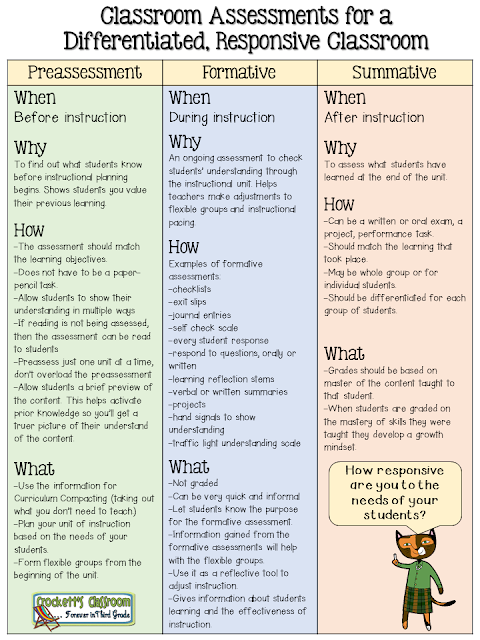I've been reading the book, Mindsets in the Classroom by Mary Cay Ricci, and just finished chapter 3. It was a real eye-opener. Through all of my years of teaching, I thought I was differentiating by planning and implementing reteaching and enrichment lessons and activities as my class worked through a unit. But in this chapter, I learned how important it is to start the differentiation before the unit even begins!
This process begins with the preassessment. So much valuable information can be gathered before you begin teaching a unit. The purpose of the preassessment is to find how much students understand the content before you plan and teach the unit.
- Do they have a complete understanding of the content? Then they will need enrichment and/or accelerated activities.
- Do they have a partial understanding of the content? Then you need to make note of the gaps in their learning so you can plan accordingly.
Another insight I gained from this chapter is the different types of assessments used in a classroom. I put together this graphic to sum up the three types of assessment you should be using in your classroom. Click on the image to download the pdf version.
You can also download this free packet with three quick and easy formative assessments you can use
You can also download this free packet with three quick and easy formative assessments you can use


















3 comments
You select the best topic for writing. Thank you for sharing with us. Further, The Denver air duct cleaning is a specialized service that should be handled by professionals.
Your insights from Mary Cay Ricci's Mindsets in the Classroom are right on! It is critical to create a differentiated, responsive classroom, and differentiation must be planned at the start of any unit. Early preparation, like university assignment help, guarantees that each student's individual demands are adequately handled.
Hello, I'm Muhammad, I'm from Pakistan. I am a content and industry specialist at Dealsexpress, where I focus on lifestyle, fashion, and emerging footwear trends. With a strong expertise in skechers shoes for men, I create well-researched content that helps readers make informed style and comfort choices. My work blends market insights with real customer needs, ensuring every piece delivers value. I’m passionate about exploring modern fashion dynamics and sharing actionable guidance with my audience.
Post a Comment